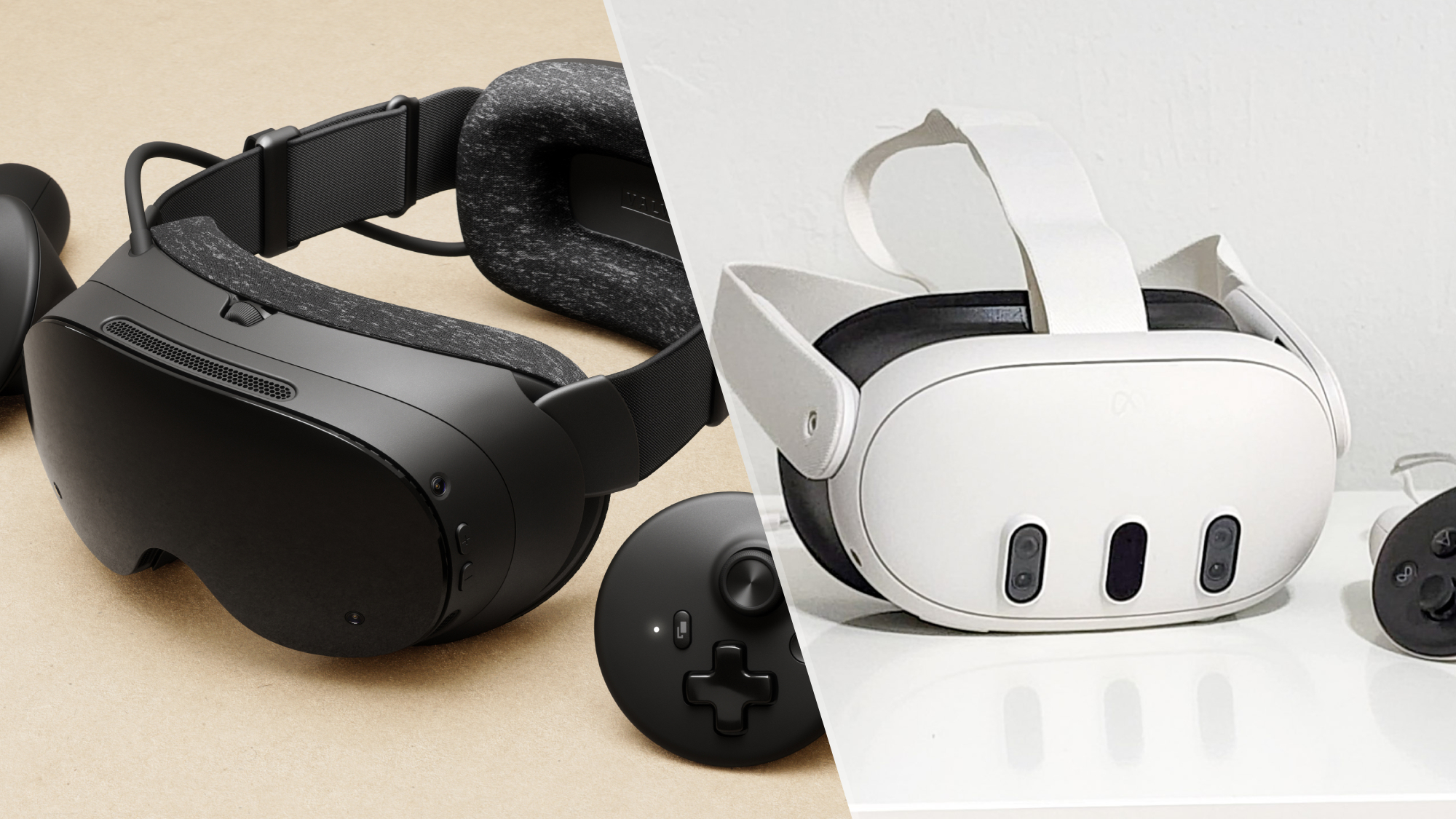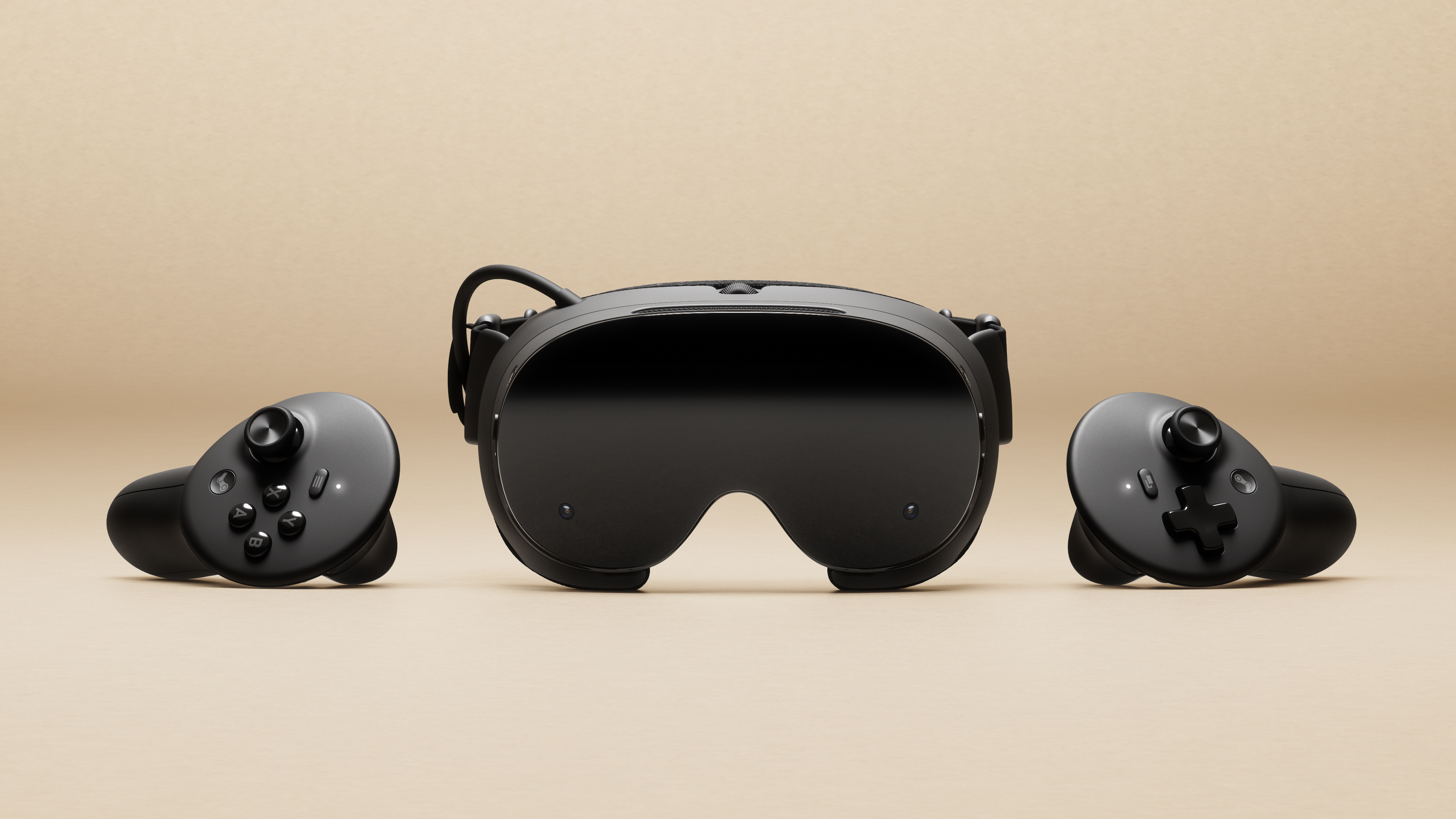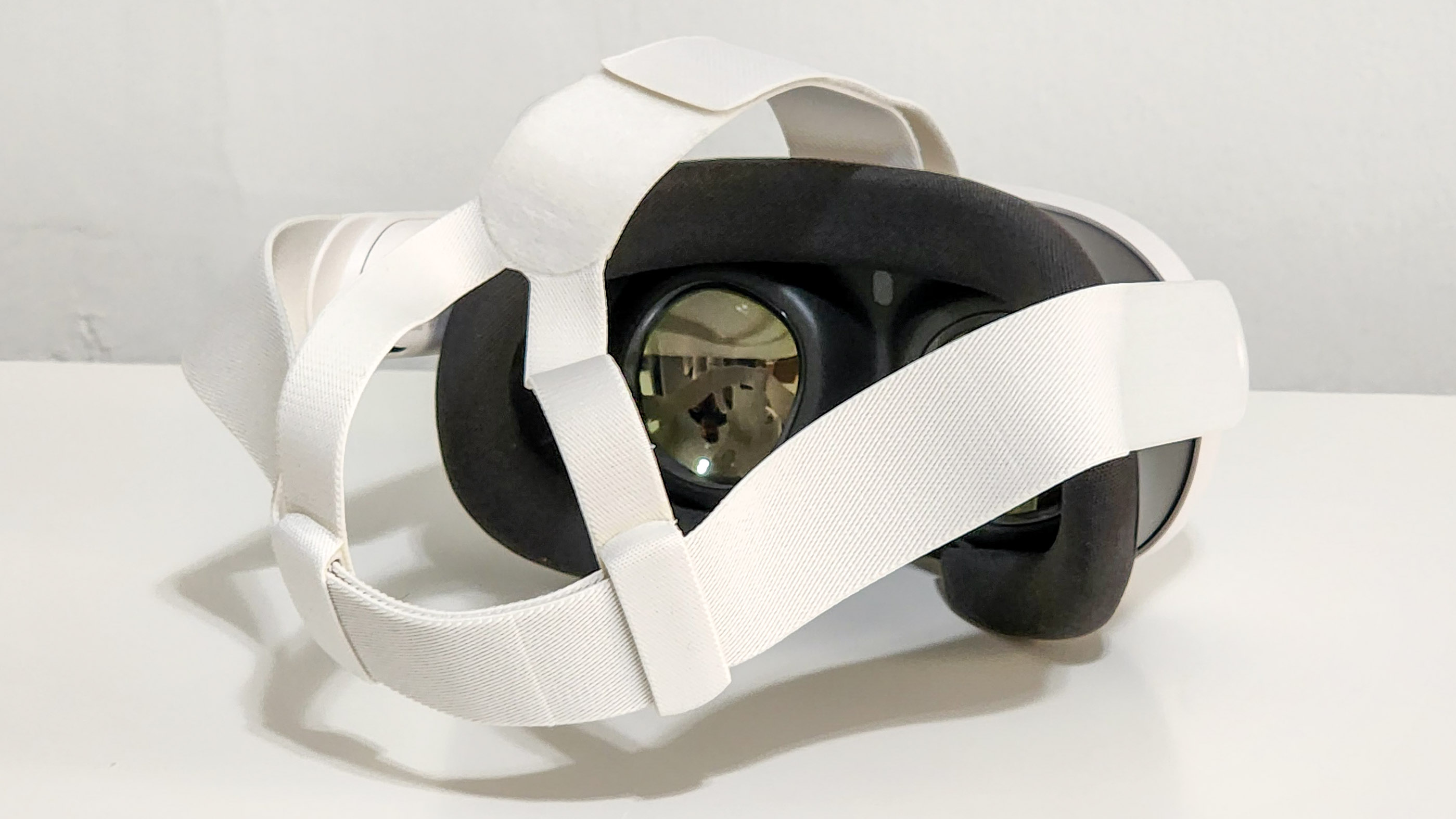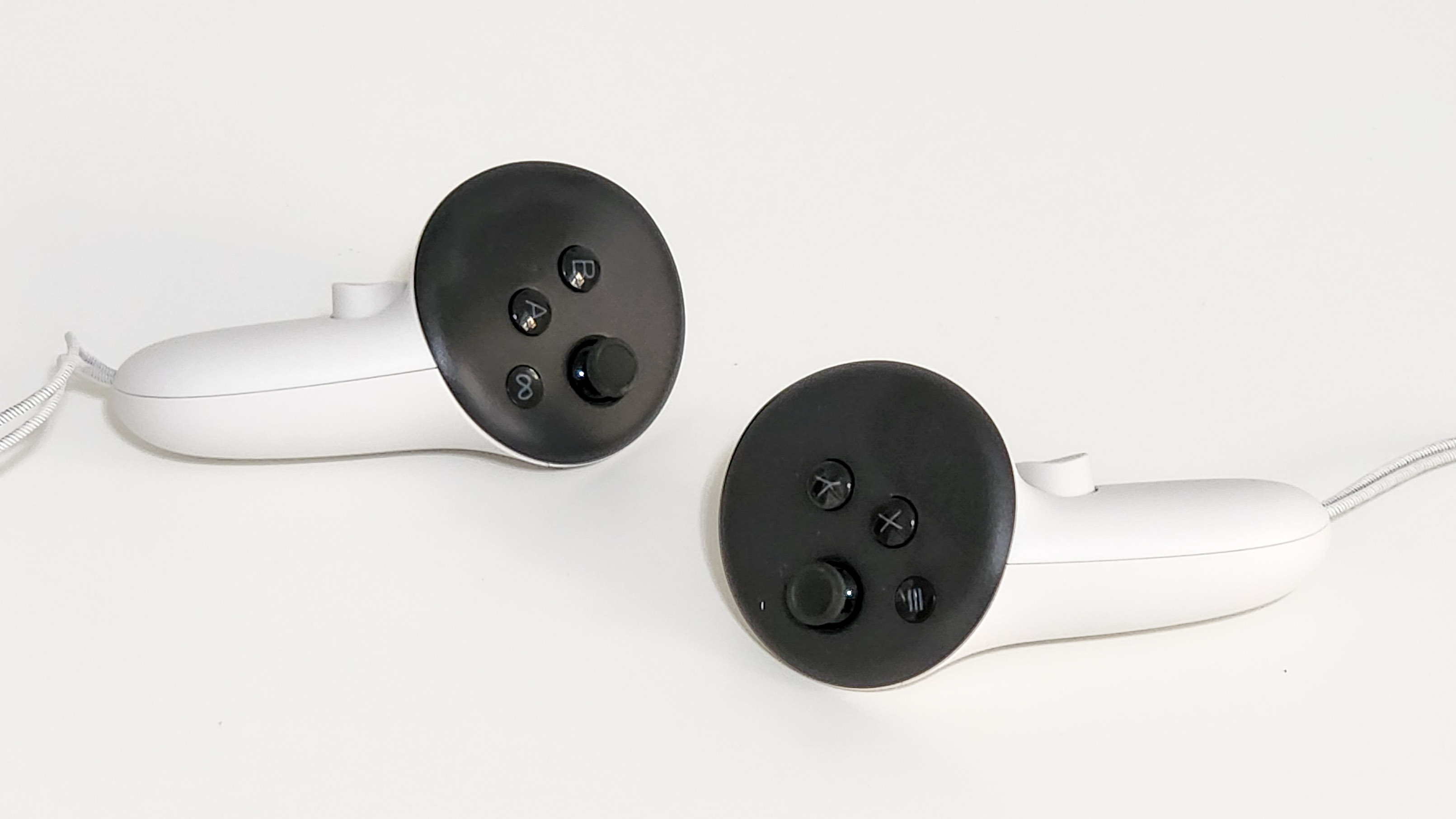Valve Steam Frame vs Meta Quest 3: Here's how the VR headsets compare

Valve unveiled a trio of highly anticipated gaming products, the Steam Machine, Steam Controller and, most excitingly for VR, the Steam Frame. Finally, the long-rumored VR headset is official, and it already appears to have one rival in its sights: the Meta Quest 3.
Holding the crown as the best VR headset you can get, the Quest 3 has barely seen any competition since its release in 2023. Unless you count Meta's own Quest 3S, that is. But Valve has now stepped into the ring with its own standalone headset, and the Steam Frame is already coming out swinging.
Aimed at being an all-encompassing device for both VR and non-VR games, Valve's latest VR headset not only finally brings some competition to the Quest 3, but it also turns the tables on what a VR headset can be. Because yes, the Steam Frame is also a PC (for your face).
But how does the Steam Frame compare to the Quest 3? Valve's VR headset isn't arriving until spring 2026, but we already have a clear view of how it may perform against Meta's current champion. Let's dive in.
Valve Steam Frame vs Meta Quest 3: Specs
| Header Cell - Column 0 | Valve Steam Frame | Meta Quest 3 |
|---|---|---|
Price | N/A | $499 |
Chipset | Snapdragon 8 Gen 3 processor (4nm) | Snapdragon XR2 Gen 2 (4nm) |
Optics | Pancake lenses | Pancake lensses |
Field of view (FOV) | 110 degrees | 110 degrees |
Resolution | 2160 x 2160 pixels per eye | 2,064 x 2,208 pixels per eye |
Refresh rate | 72Hz-144Hz (144Hz experimental) | 72Hz-120Hz |
Storage | 256GB/1TB | 512GB |
RAM | 16GB | 8GB |
Connectivity | Wi-Fi 7 (wirless adapter with Wi-Fi 6E) | Wi-Fi 6E |
Size | 6.8 x 4.3 x 3.7 inches | 7.2 x 6.2 x 3.8 inches |
Weight | 0.9 pounds (including headstrap) | 1.1 pounds (including headstrap) |
Valve Steam Frame vs Meta Quest 3: Rumored price

Valve has yet to announce the price for its Steam Frame, so it's hard to tell whether it will be in the same bracket as the Meta Quest 3. That said, considering its specs, there's reason to believe it will be at least below $1,000.
Sporting a Snapdragon 8 Gen 3 processor, pancake lenses and an LCD display with similar resolution, the Steam Frame shares a few key specs with the Quest 3. With this being the case, there's a lot of hope that Valve will keep the price down as much as possible (at least, that's been the goal of its Steam Deck, which is still one of the most affordable handheld gaming PCs).
The Quest 3 is now priced at $499, after dropping the price from its original $649 at launch. That made it a hugely competitive VR device, especially since it's standalone. And it's only undercut by the Quest 3S at $299.
Get instant access to breaking news, the hottest reviews, great deals and helpful tips.
Previously, rumors have suggested the Steam Frame will cost around $1,200 / £950 / AU$1,900, but this now seems a little steep for what's on offer. However, based on the specs shown, it appears that Valve's VR device may be more expensive than the Quest 3. Here's hoping it's not by much.
Valve Steam Frame vs Meta Quest 3: Design

Valve appears to have taken some design cues from the Meta, as the Steam Frame looks interestingly similar to the Quest 3. But there are a few differences that already appear to give the Frame an edge.
The Steam Frame comes with cushioning on the facial interface and rear, with the latter holding the rechargeable 21.6 Wh battery that appears to plug into the headset. There's no top strap like on the Quest 3, but the modular headstrap appears to be more integrated into the headset itself, as it also includes dual audio drivers.
The headset with the strap attached is only a lightweight 0.9 pounds (440g), whereas the Quest 3 comes in at 1.1 pounds (515g), which is an impressive feat. Oh, and the Steam Frame is slightly smaller in size.

While the Quest 3 resembles a headset, with its three slits for the cameras on its face, the Steam Frame adopts a more goggle-like design — similar to the Apple Vision Pro. There are four outward-facing monochrome cameras for tracking and passthrough. However, the Quest 3 offers two RGB cameras (in addition to four IR cameras) for full-color passthrough.
Otherwise, you'll find volume controls, a power button and an IPD (Interpupillary Distance) adjustment wheel to get the right pupil distance. Plus, just like the Quest 3, the headstrap is swappable, meaning we could see many third-party providers offering their own headstrap options.
But two big differences set the Steam Frame and Quest 3 apart: eye-tracking cameras and a microSD card slot. Valve introduced its "Foveated Streaming," which tracks your eyes to bring the best image quality to where you're looking. It's said to bring "over a 10x improvement" in details, and works for all games in Steam.
The microSD card slot is also a welcome addition, as it allows users to expand storage and even boot up games that you may have stored on your Steam Deck. Now that's a smart move.
Valve Steam Frame vs Meta Quest 3: Display

We're big fans of the pancake optics introduced in the Meta Quest 3, and thankfully, Valve is following suit with its own custom pancake lenses.
These work by layering thin lenses to reproduce images in a smaller space, resulting in better clarity and higher resolution. It's why Meta calls the LCD displays the "4K+ Infinite Display," with the 2,064 x 2,208 pixels per eye resolution combining to bring 4K quality. Plus, the Quest 3 comes with 72Hz, 90Hz and 120Hz refresh rates.
Well, the Steam Frame takes this up a notch. Valve's VR headset is equipped with LCD displays featuring a 2160 x 2160 resolution per eye, and supports refresh rates ranging from 72Hz to 144Hz — although the 144Hz option is noted to be "experimental." Still, that shows how far the headset can be pushed.

It's not by much, but the Steam Frame looks to deliver cleaner, more detailed visuals compared to the Quest 3. Plus, with Foveated Streaming that uses eye tracking to beam the best visual quality to where you're looking, the Steam Frame should bring about some upscaled visuals in VR and non-VR games compared to the Quest 3.
Of course, we'll have to see how it all looks once we properly test ourselves, and the Quest 3 still delivers some impressive picture quality, especially in games like Batman: Arkham Shadow and well-praised Red Matter 2.
Valve Steam Frame vs Meta Quest 3: Performance

Qualcomm makes a return for yet another VR headset, as the Steam Frame comes with a Snapdragon 8 Gen 3 processor based on a 4nm process and using ARM64 architecture. That actually isn't too far off the Quest 3's Snapdragon XR2 Gen 2 chip, since both are based on a 4nm process.
It's interesting that Valve decided to put this chip in its device, considering we're now on the Snapdragon 8 Elite Gen 5. That's not to say that the Snapdragon 8 Gen 3 isn't powerful, but it is the chip that powers the Samsung Galaxy S24, and the Galaxy S26 is now just around the corner.
Either way, seeing games played on the Steam Frame, especially as a standalone device, will offer proper insight into how the chip performs. However, what we do know is that the Frame will offer beefier internals compared to the Quest 3.

The VR headset comes packed with 16GB of DDR5 RAM and up to a 1TB SSD, which is double what the Quest 3 offers. This should lead to faster processing speeds and more room to handle data for VR apps and more. What's more, the Steam Frame's microSD slot means its storage can easily be expanded.
Valve states the Steam Frame is a PC, with the headset being able to install different apps on the fly. It's meant to play both VR and non-VR games, and not just by streaming from Xbox Game Pass like on the Quest 3. It supports stand-alone gameplay and comes with its own Steam Frame verification program, so you know which VR and PC games work on the device.
The Quest 3 falls behind in this department, as it's only really made for VR and mixed-reality experiences. Although you can use Mixed Reality Link to connect to a PC, again, that's streaming. It's only a matter of time until we see how well it can play Steam's vast library of games, and just how far it goes before needing to plug in the 6GHz wireless adapter to stream with low latency from a PC.
Valve Steam Frame vs Meta Quest 3: Controllers

Those Steam Frame controllers look awfully familiar, as they really aren't too unlike the Quest 3's Quest Touch Plus controllers. But the Frame appears to have more gamer-focused features, as it's also essentially your regular gaming controller split in half.
You'll get your typical D-pad, triggers, bumpers, ABXY buttons and thumbsticks as with the best gaming PC controllers, just with VR optimizations. So, 6DoF (degrees of freedom) tracking, haptic feedback, capacitive finger tracking and sensing on all input surfaces and dual-stage grip buttons, too. It's like the Quest Touch Plus controllers, just with more gamer-fied functions with more buttons.

Oh, and the welcome addition of full-size magnetic TMR thumbsticks (Tunnel Magneto Resistance), which offer up even more precise levels of accuracy than what the Hall Effect is capable of. The Quest's controllers appear to be a little barebones in comparison.
Like the Quest 3, the Steam Frame controllers are powered by AA batteries. Of course, we'd love to see rechargeable controllers, but sure enough, we're sure to see rechargeable controller batteries come into play down the line.
Valve Steam Frame vs Meta Quest 3: OS

It's a battle of the operating systems. Or sort of, seeing as Meta Horizon OS can also be connected to a PC, wired or wirelessly. But having SteamOS operating on the Steam Frame, just as it would on the Steam Deck, is a bonus, as it will make the Steam Frame feel more like a VR headset made for PCVR.
Meta Horizon OS is one of the first VR-first operating systems, and it's improved over the years to provide a wide library of games and apps. It's easy to navigate, provides constant updates and delivers ways to connect to other platforms, like Windows PCs, Xbox Game Pass and streaming services via the recent Horizon TV Hub.

SteamOS is all about gaming, with the Steam Frame being able to use quick suspend and resume, cloud saves and access to your library of games — just in VR. We've praised SteamOS time and time again, even on the Lenovo Legion Go S with SteamOS.
VR users will have seen how SteamVR looks, but with SteamOS, I'm hoping to see a simple, user-friendly experience that makes accessing games on the Steam Frame extremely easy.
Valve Steam Frame vs Meta Quest 3: Outlook

There's still a lot to learn about Valve's Steam Frame, but for now, it's taking on the Meta Quest 3 in a big way. From the pancake optics delivering higher resolution and refresh rates, controllers that act as regular console controls and eye-tracking, the Frame aims to take the crown as the standalone VR headset to get.
Of course, that won't be taken so easily, considering the Meta Quest 3 still offers incredible value for VR (with the Quest 3S bringing even more). We'll have to see the price of Valve's latest VR device, and how it performs as a way to play VR games and regular PC games — whether it's running on the Frame itself or through a wireless connection to a PC.
I can't wait to try out the Steam Frame, but that's not all Valve has up its sleeve. For more on how the Steam Machine compares to the PS5, Xbox Series X and more, we've got the latest.

Follow Tom's Guide on Google News and add us as a preferred source to get our up-to-date news, analysis, and reviews in your feeds.
More from Tom's Guide
- I might ditch my gaming PC for the Steam Machine — here's why
- Samsung Galaxy XR vs Apple Vision Pro vs Meta Quest 3: Which headset is right for you?
- I got this compact power bank for my Meta Quest 3, but now I use it to charge everything

Darragh is Tom’s Guide’s Computing Editor and is fascinated by all things bizarre in tech. His work can be seen in Laptop Mag, Mashable, Android Police, Shortlist Dubai, Proton, theBit.nz, ReviewsFire and more. When he's not checking out the latest devices and all things computing, he can be found going for dreaded long runs, watching terrible shark movies and trying to find time to game
You must confirm your public display name before commenting
Please logout and then login again, you will then be prompted to enter your display name.
